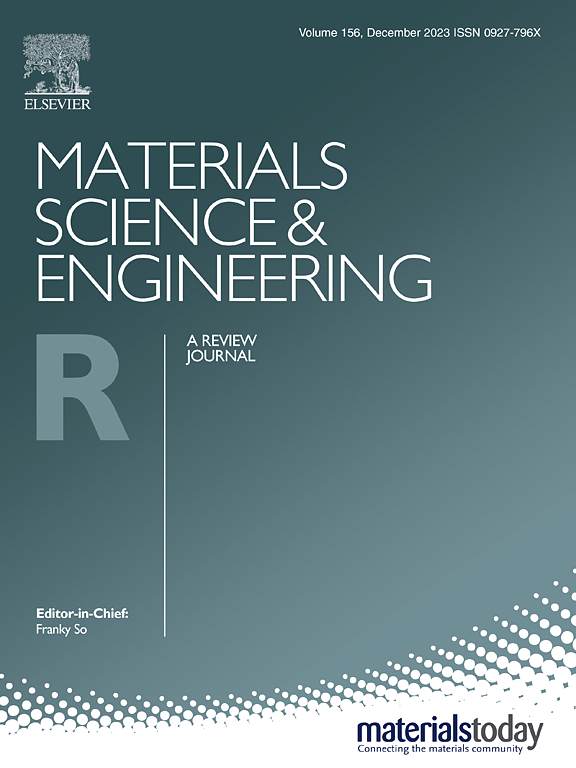Air-breathing cathode for aluminum–air battery: From architecture to fabrication and evaluation
IF 31.6
1区 材料科学
Q1 MATERIALS SCIENCE, MULTIDISCIPLINARY
引用次数: 0
Abstract
Aluminum–air battery is a kind of energy storage device use aluminum metal as negative material and oxygen in atmosphere as positive reactant, and it is also usually called a power generation device of semi-fuel cell. It has received great interest in both industrial and academic field owing to the high theoretical energy density, low cost, abundant aluminum reserves. In the more than 60 years since the first Al–air battery was invented in 1962, a series of Al–air battery such as aqueous primary battery, hydrogel-based primary battery, non-aqueous and aqueous rechargeable secondary battery, have been extensively studied from a fundamental research perspective. At the same time, from a practical application perspective, development and its application of prototype has experienced two major waves of research enthusiasm: first boom led by Alupower (a subsidiary of Alcan) from 1980 to 1995 after the 1973 oil embargo; another sparked by Alcoa and Phinergy since 2014. At present, aluminum has gradually been recognized as one of the important energy carriers. For Al–air battery, the air-cathode is one of the core components in battery, which affects the electrochemical performance and service life of battery. In this review, the principle & features, development history, and recent research progress of Al–air battery are systematically summarized. Specifically, the air-breathing cathode (covering architecture structure, gas diffusion layer, current collecting layer, catalyst layer and oxygen reduction catalyst), fabrication process, test & evaluation are comprehensively discussed. Finally, the existing technical hurdles and recommended future research perspectives of air-breathing cathode in Al–air battery are summarized and proposed to stimulate broader interest of researchers and engineers, and attempt to provide some insights for future development.
铝-空气电池呼吸式阴极:从结构到制造和评价
铝空气电池是一种以金属铝为负极材料,以大气中的氧气为正极反应物的储能装置,通常也被称为半燃料电池的发电装置。由于理论能量密度高、成本低、铝储量丰富等优点,引起了工业界和学术界的极大兴趣。自1962年第一个Al-air电池发明以来,60多年来,人们从基础研究的角度对一系列Al-air电池进行了广泛的研究,包括水原电池、水凝胶原电池、非水电池和水可充二次电池。同时,从实际应用的角度来看,样机的研制及其应用经历了两大研究热潮:1973年石油禁运后,1980年至1995年由Alupower(加拿大铝业的子公司)主导的第一次热潮;自2014年以来,美国铝业(Alcoa)和菲尼奇(Phinergy)引发了另一场危机。目前,铝已逐渐被公认为重要的能量载体之一。对于铝空气电池来说,空气阴极是电池的核心部件之一,影响着电池的电化学性能和使用寿命。在这篇综述中,原理&;系统地综述了铝空气电池的特点、发展历史及近年来的研究进展。具体介绍了吸气式阴极(包括结构、气体扩散层、集流层、催化剂层和氧还原催化剂)、制造工艺、测试;对评价进行了全面的讨论。最后,对铝空气电池吸气式阴极存在的技术障碍和未来的研究方向进行了总结和建议,以激发研究人员和工程师更广泛的兴趣,并试图为未来的发展提供一些见解。
本文章由计算机程序翻译,如有差异,请以英文原文为准。
求助全文
约1分钟内获得全文
求助全文
来源期刊

Materials Science and Engineering: R: Reports
工程技术-材料科学:综合
CiteScore
60.50
自引率
0.30%
发文量
19
审稿时长
34 days
期刊介绍:
Materials Science & Engineering R: Reports is a journal that covers a wide range of topics in the field of materials science and engineering. It publishes both experimental and theoretical research papers, providing background information and critical assessments on various topics. The journal aims to publish high-quality and novel research papers and reviews.
The subject areas covered by the journal include Materials Science (General), Electronic Materials, Optical Materials, and Magnetic Materials. In addition to regular issues, the journal also publishes special issues on key themes in the field of materials science, including Energy Materials, Materials for Health, Materials Discovery, Innovation for High Value Manufacturing, and Sustainable Materials development.
 求助内容:
求助内容: 应助结果提醒方式:
应助结果提醒方式:


